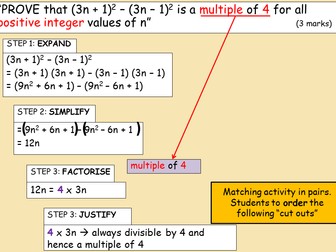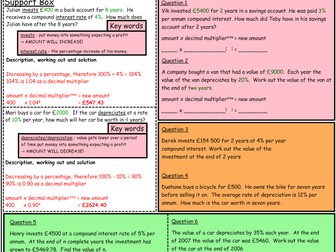
Algebraic Proof
A lesson that was used to secure a job. Lesson begins with testing students ability to expand double brackets. Presentation slides scaffolds working out needed for algebraic proof. This is complimented by a matching activity which is followed by a RAG activity, the red having a scaffold to assist students. Please leave feedback and rate!

